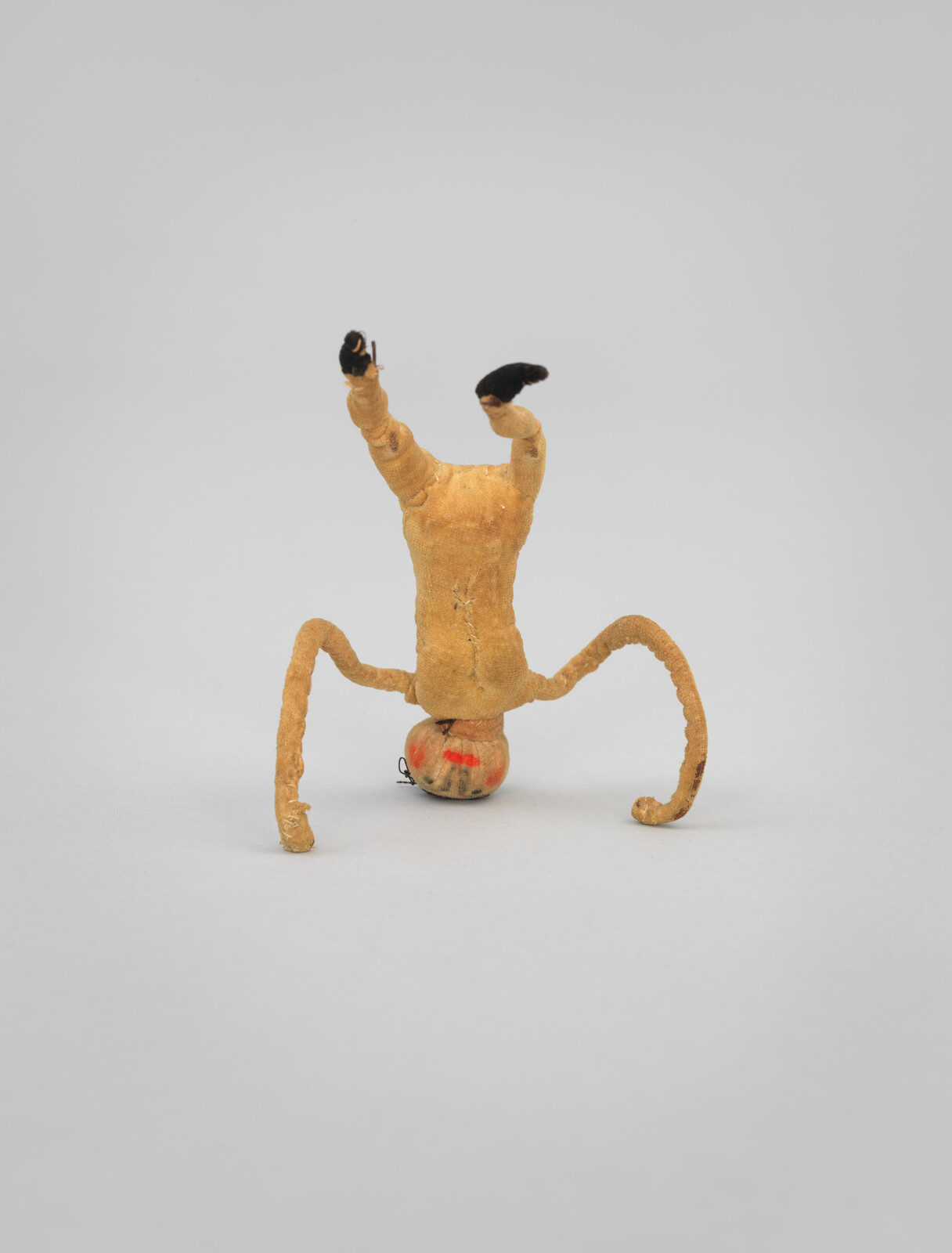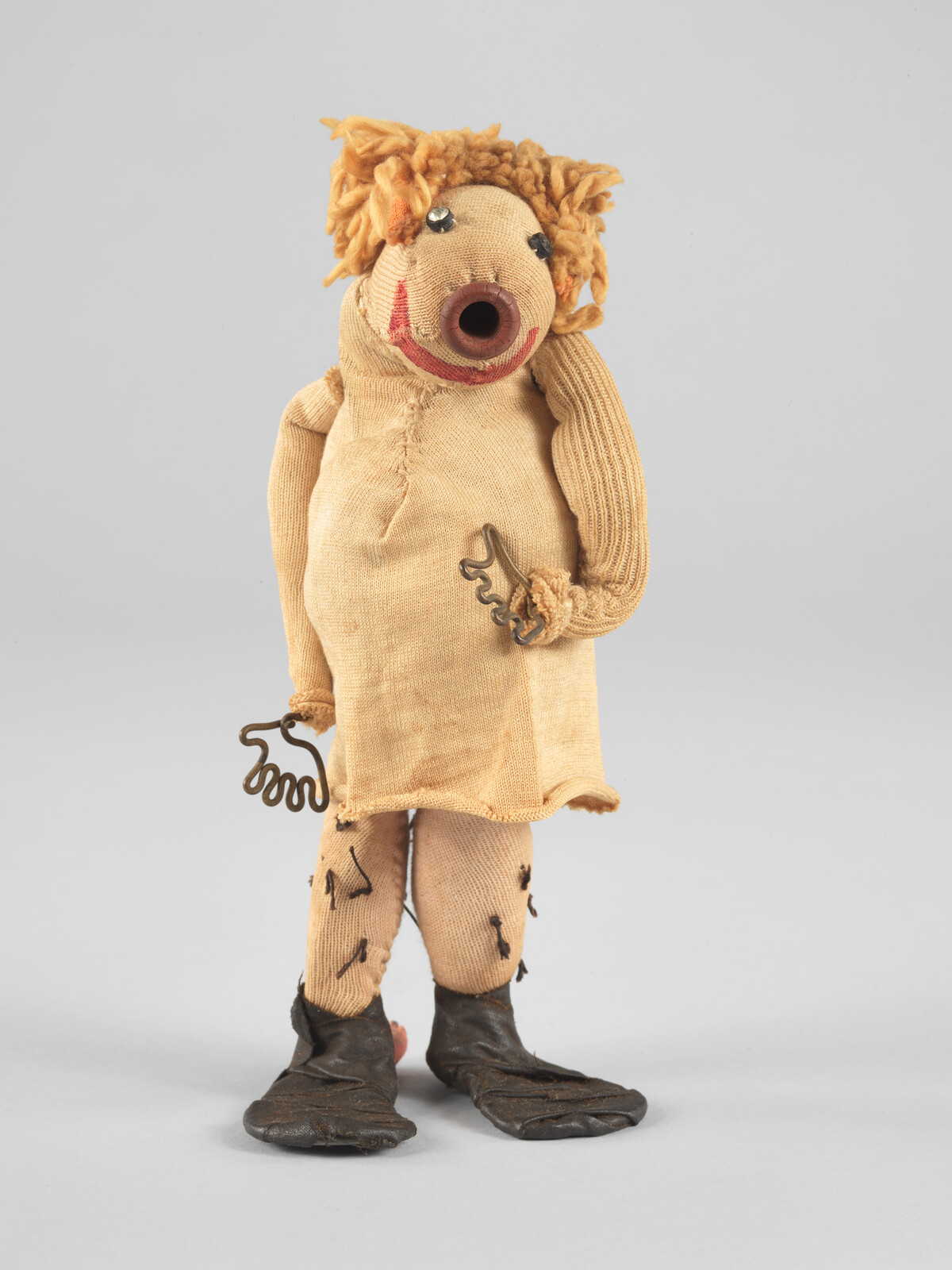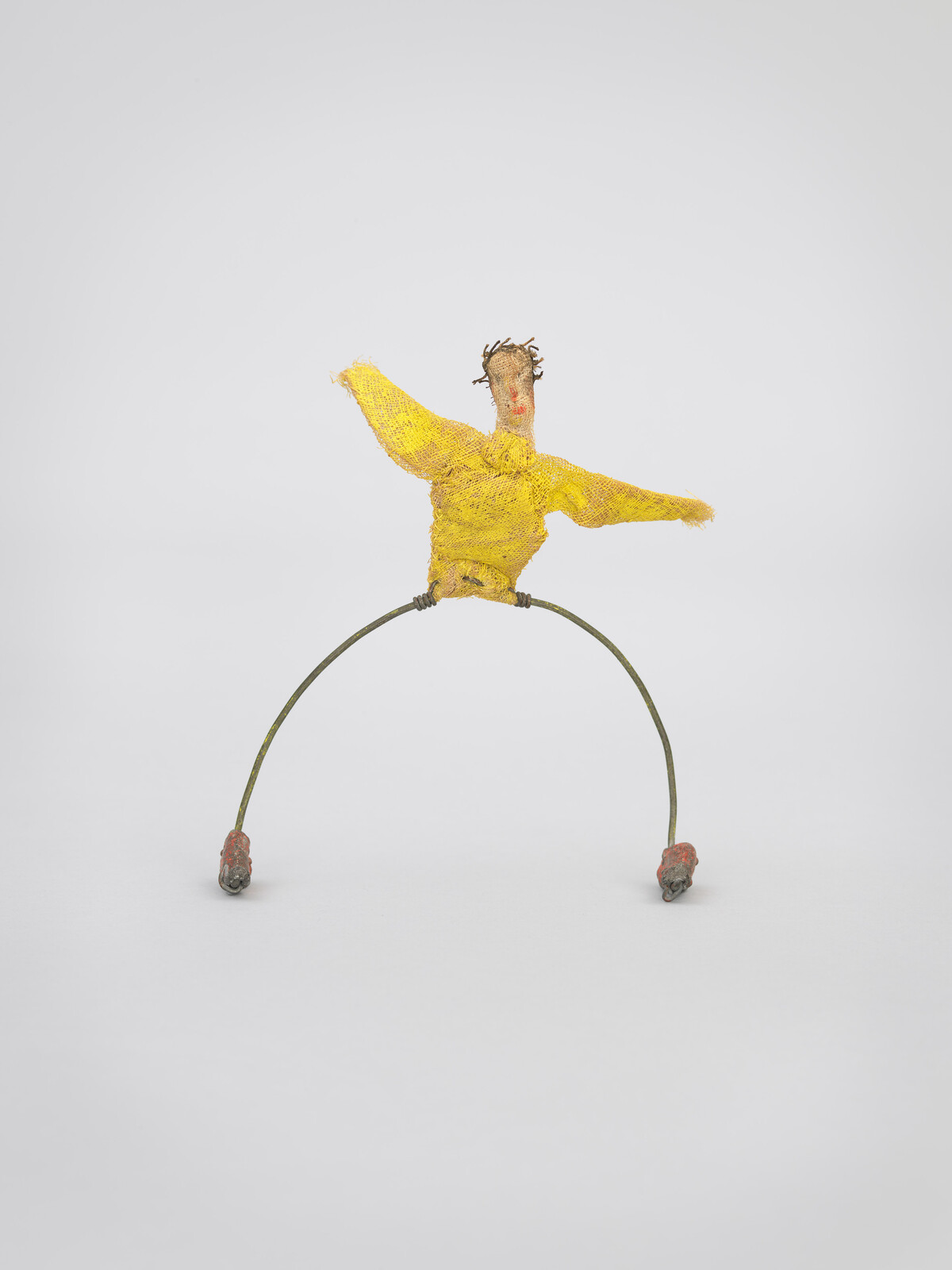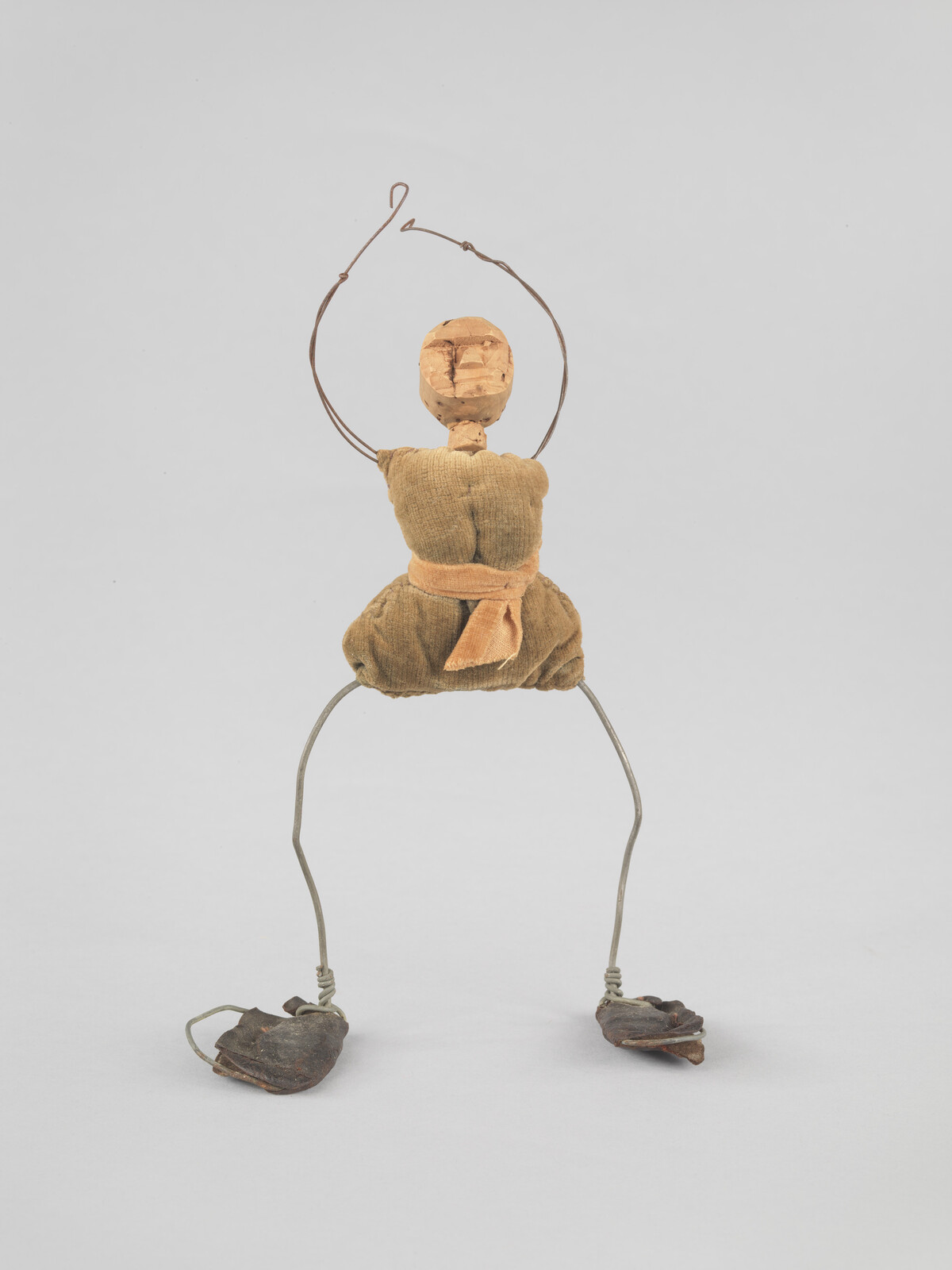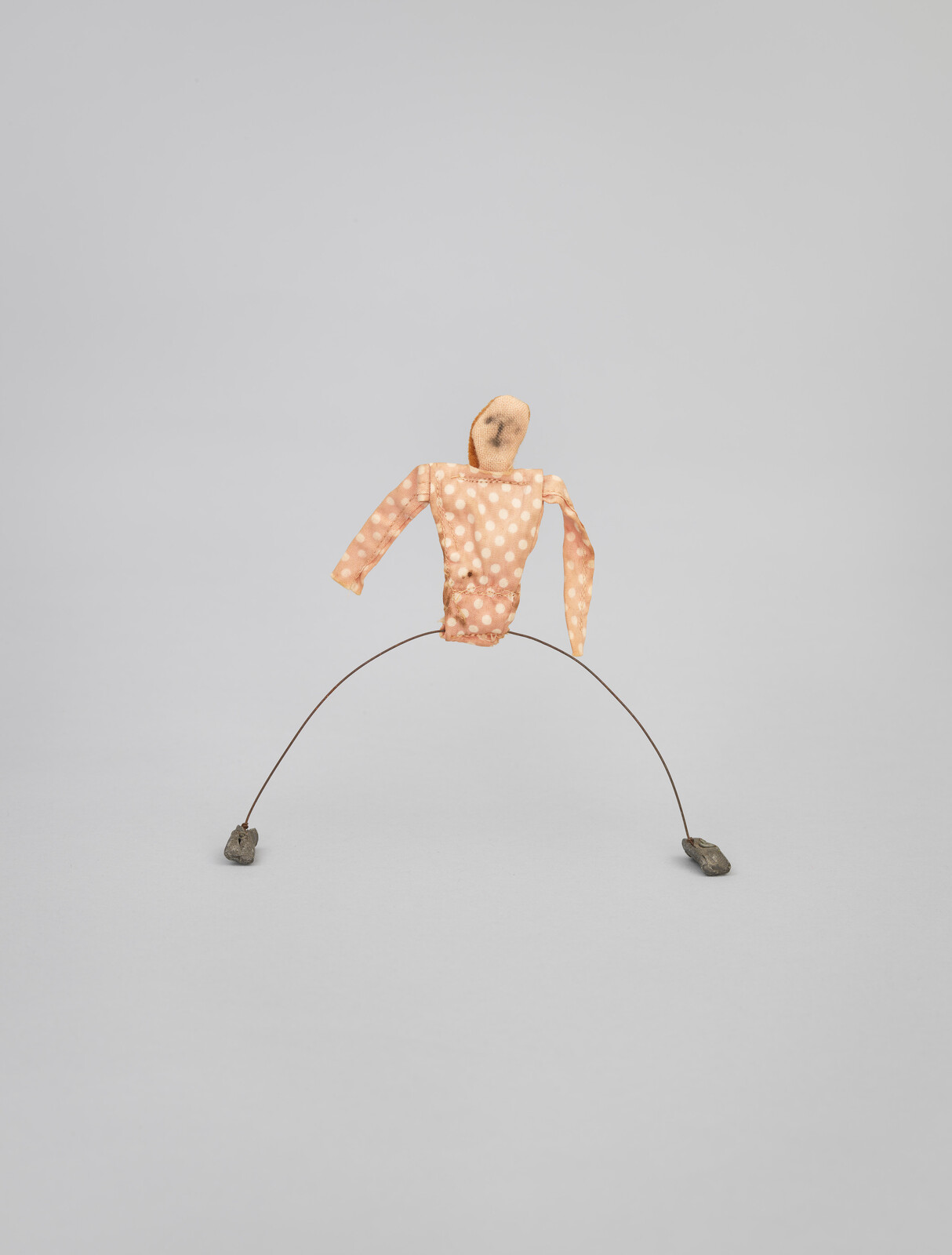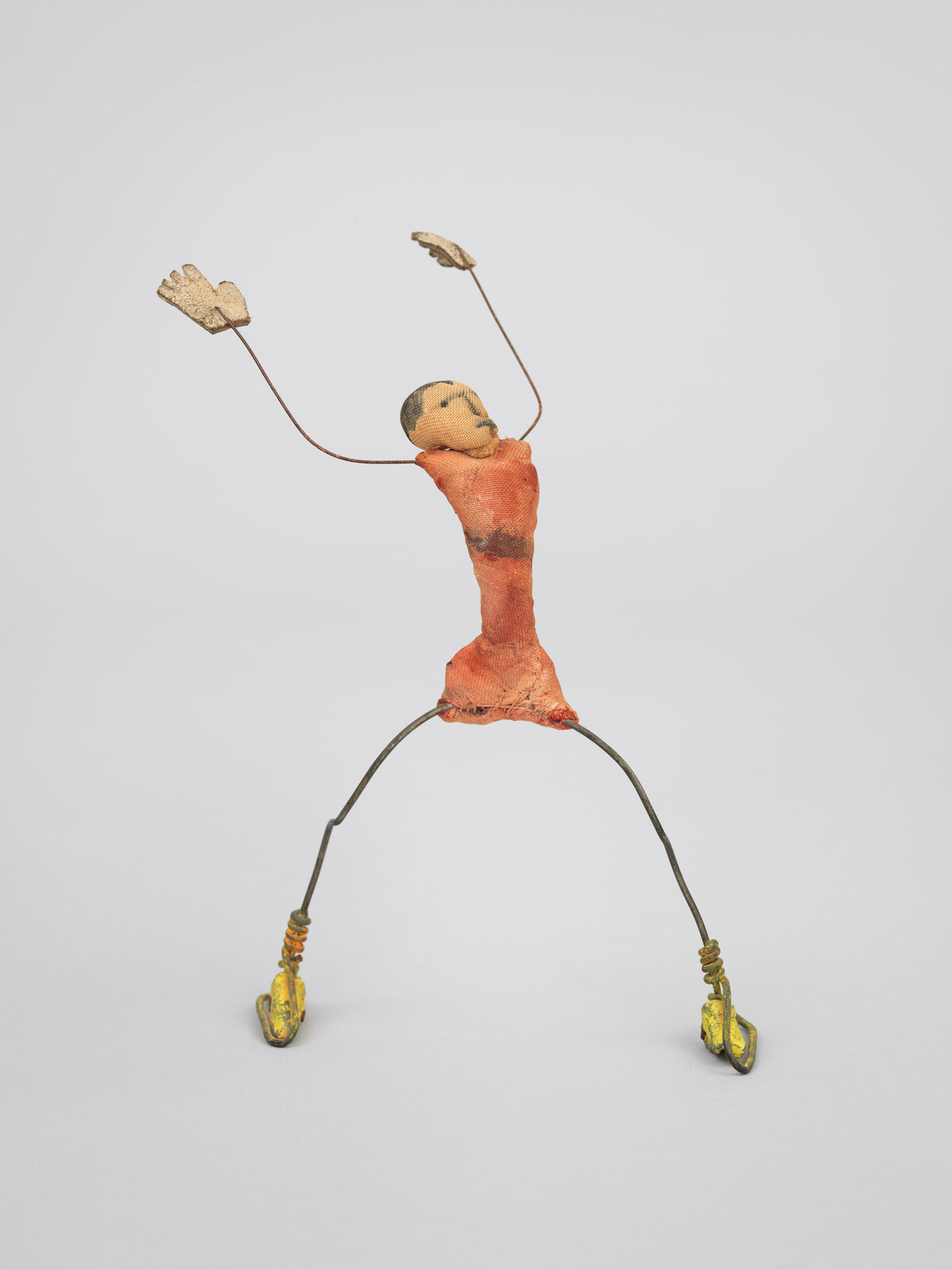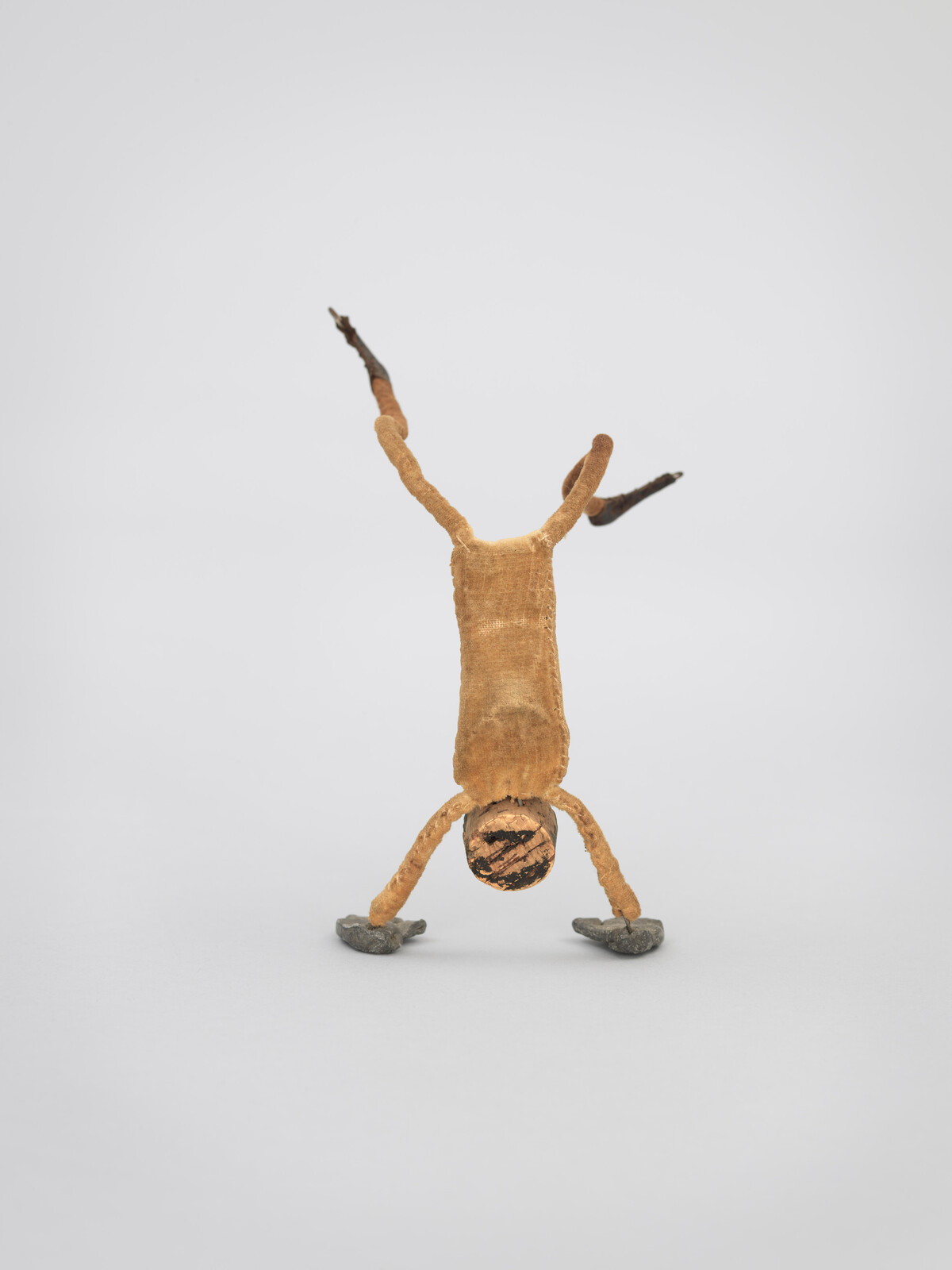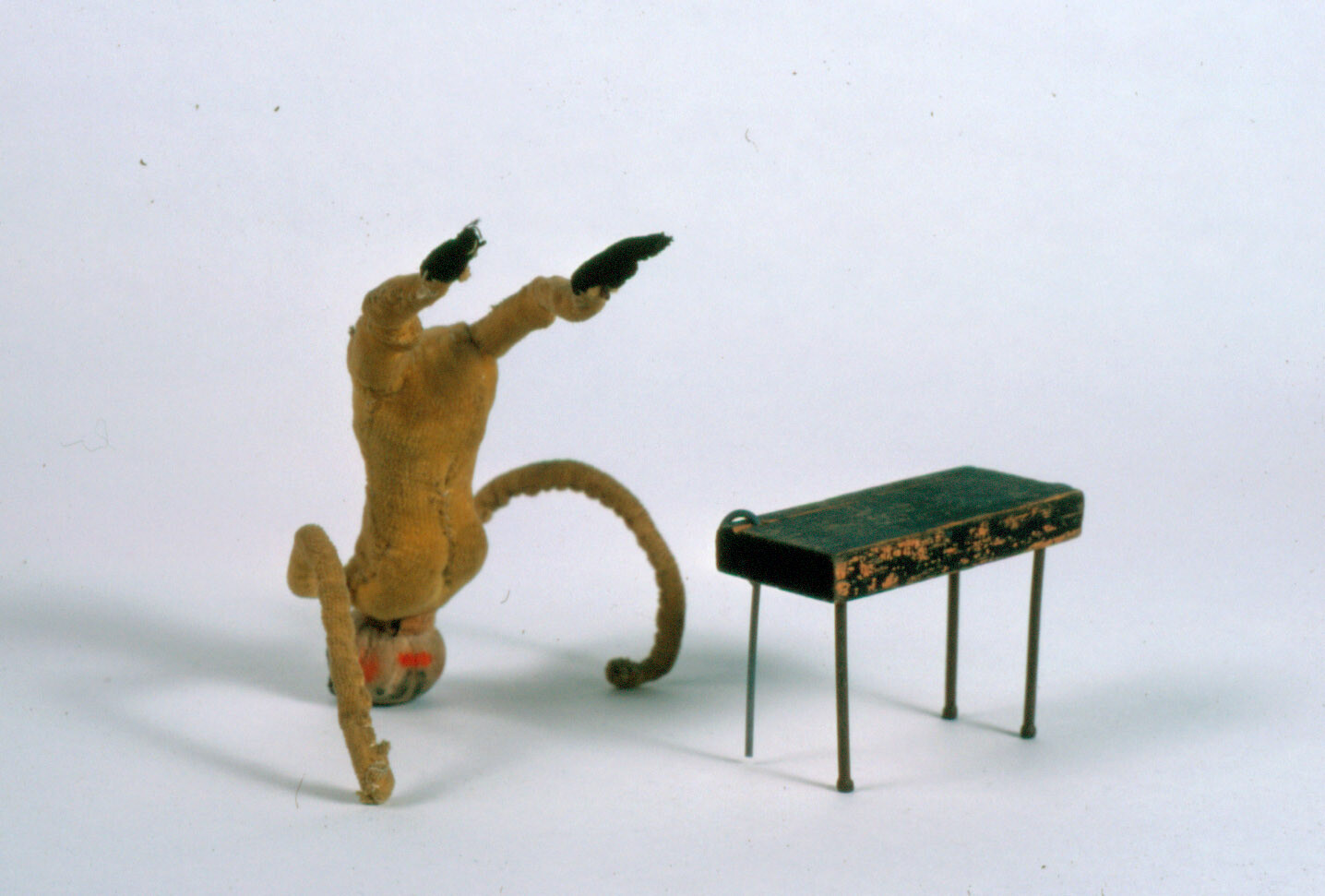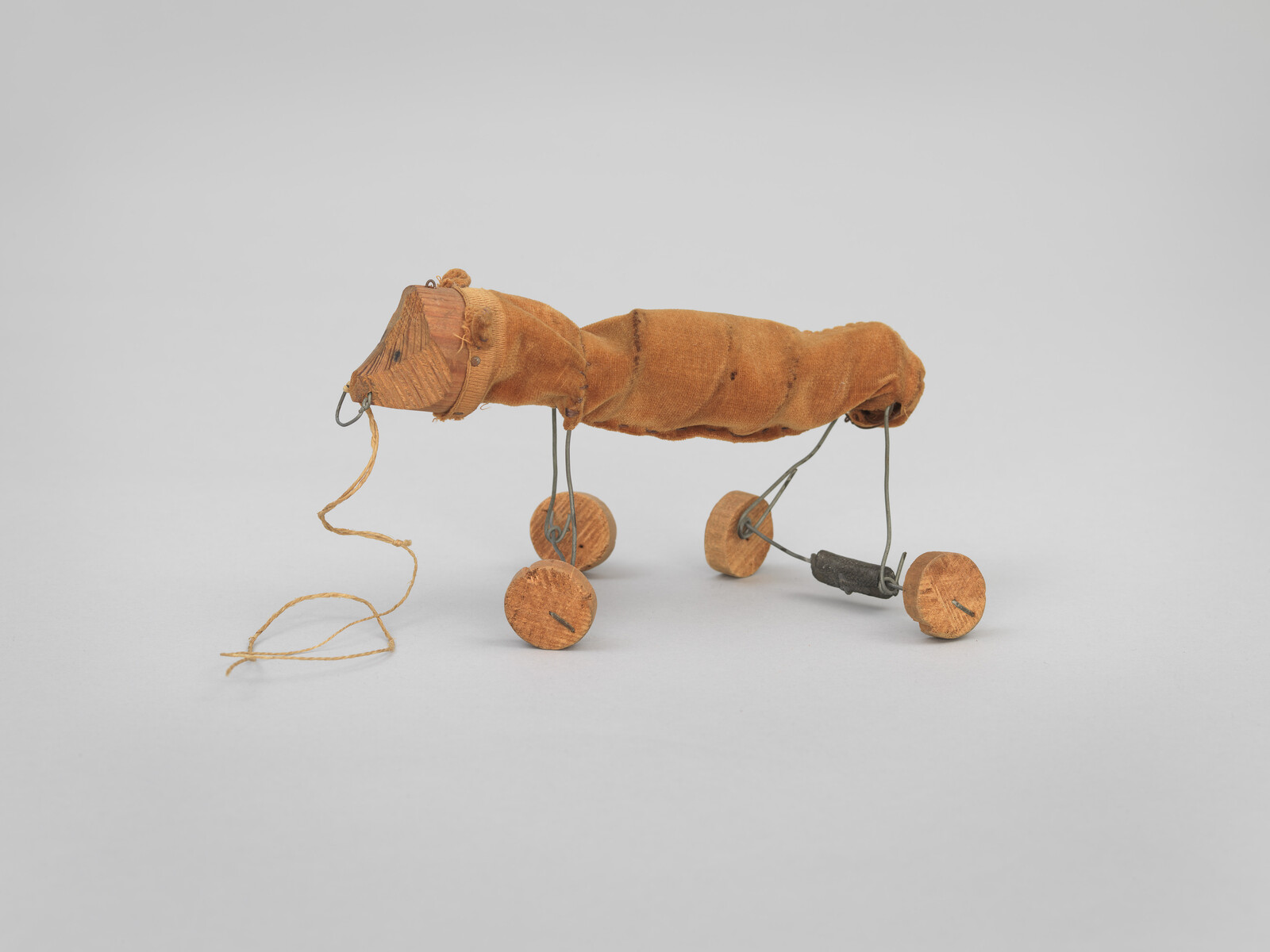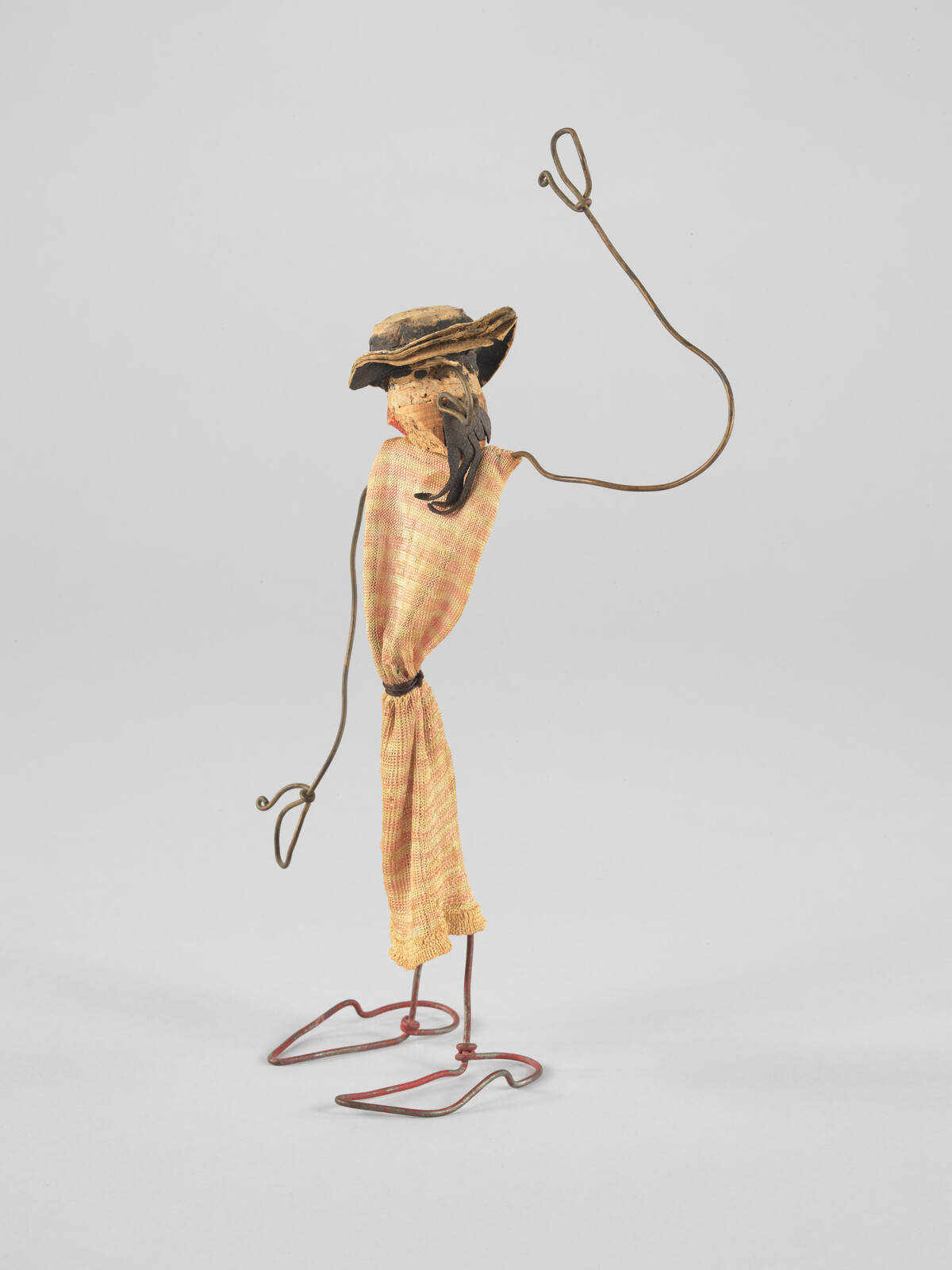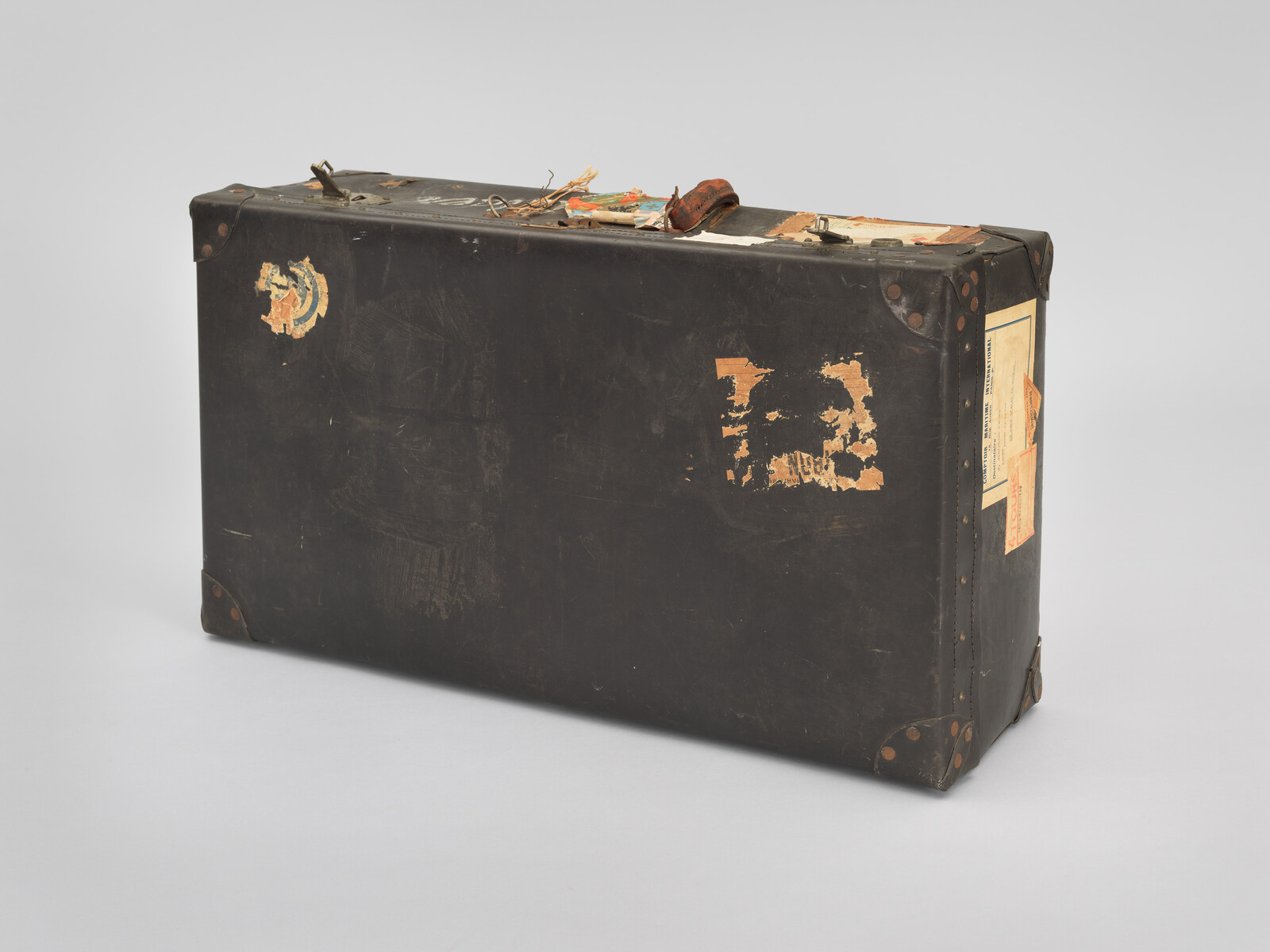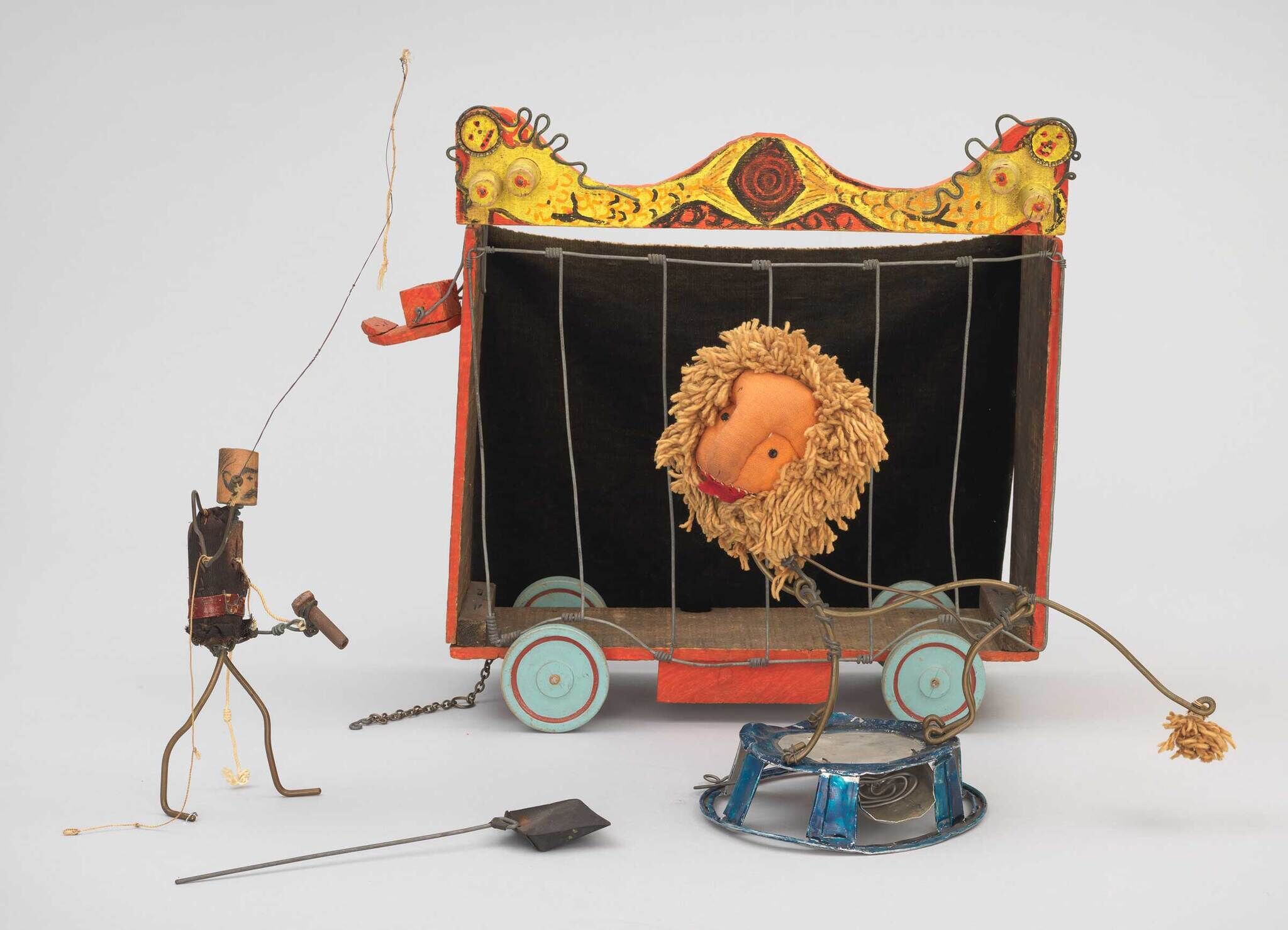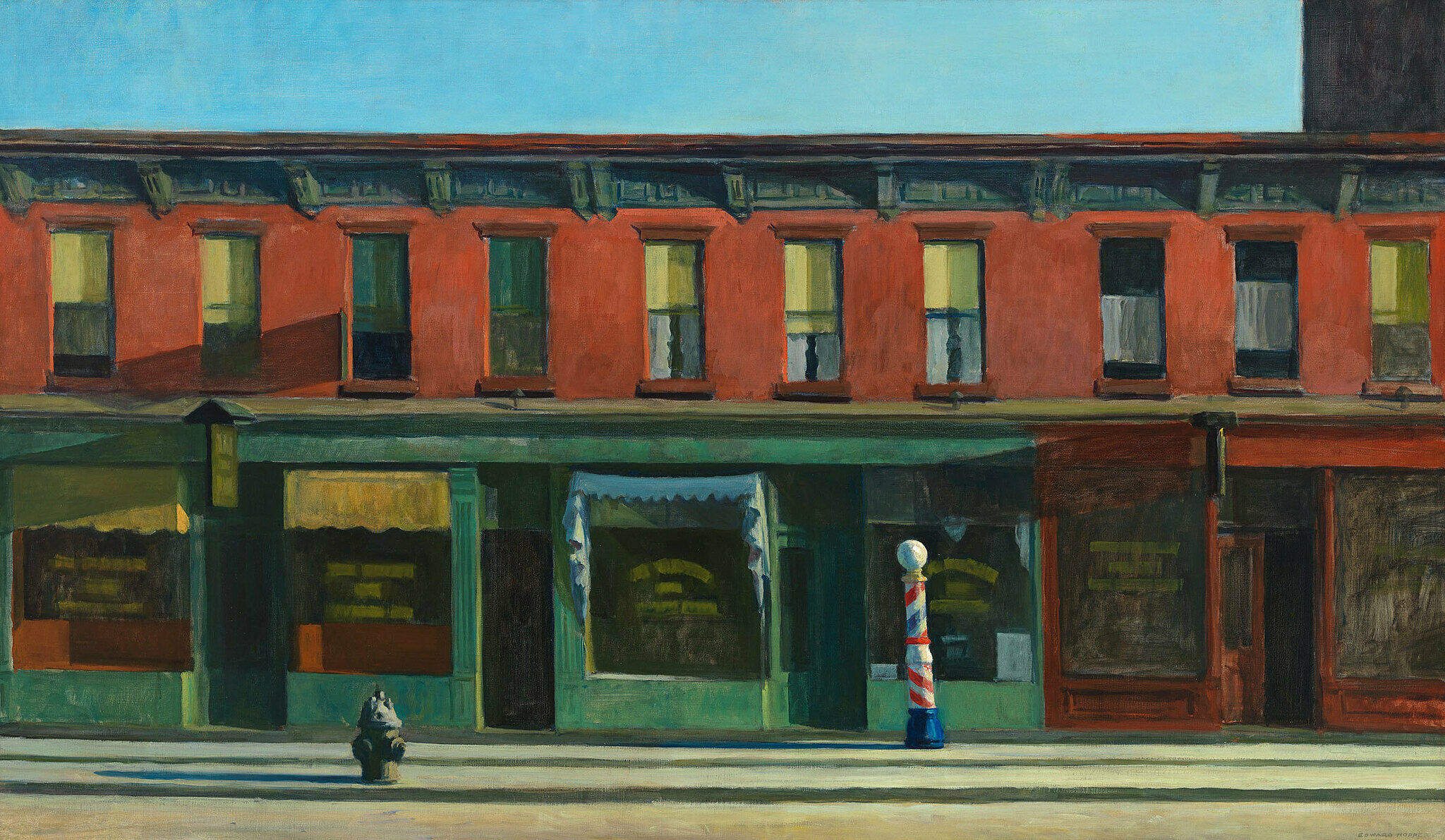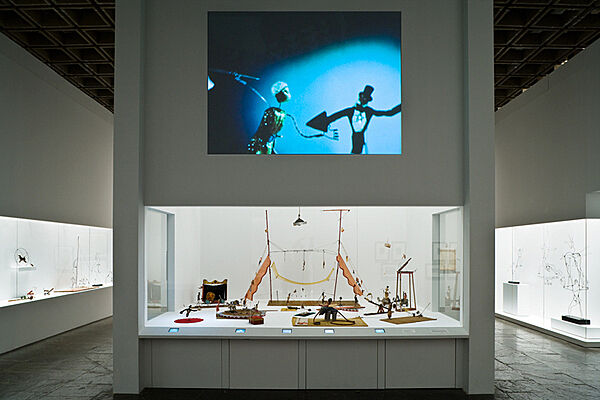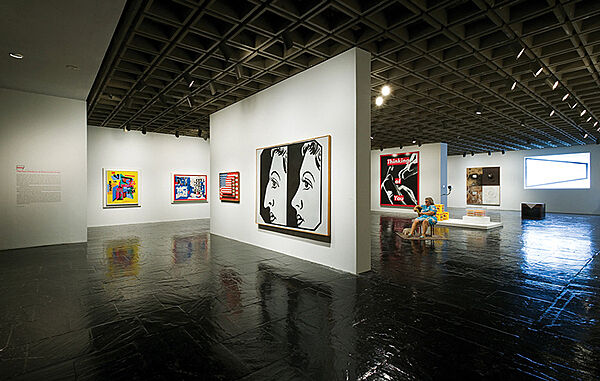From 1926-1933, Alexander Calder lived in Paris and traveled frequently, most often to New York, but also throughout Europe. During this period, he transported his miniature circus in several suitcases and gave performances on both sides of the Atlantic in his studios and in the apartments of friends or art patrons. At first, Calder’s Circus could fit into two suitcases, but over time, it grew to fill five of them. Made of black leather, the suitcases were each labeled with a large white number. The numbers were part of Calder’s system for setting up Calder’s Circus according to his specifications. The insides of the cases are lined with fabric on which he hand-wrote his home address in Paris so they could be returned if lost. On the outside, the suitcases show the evidence of Calder’s Circus’s travels—they are dented, battered, and covered on all sides with baggage labels.
On view
Floor 8
Date
1926–1931
Classification
Plates
Medium
Suitcase
Dimensions
Overall: 9 × 29 3/4 × 17 1/2 in. (22.9 × 75.6 × 44.5 cm)
Accession number
83.36.62a-c
Credit line
Purchase, with funds from a public fundraising campaign in May 1982. One half the funds were contributed by the Robert Wood Johnson Jr. Charitable Trust. Additional major donations were given by The Lauder Foundation; the Robert Lehman Foundation, Inc.; the Howard and Jean Lipman Foundation, Inc.; an anonymous donor; The T. M. Evans Foundation, Inc.; MacAndrews & Forbes Group, Incorporated; the DeWitt Wallace Fund, Inc.; Martin and Agneta Gruss; Anne Phillips; Mr. and Mrs. Laurance S. Rockefeller; the Simon Foundation, Inc.; Marylou Whitney; Bankers Trust Company; Mr. and Mrs. Kenneth N. Dayton; Joel and Anne Ehrenkranz; Irvin and Kenneth Feld; Flora Whitney Miller. More than 500 individuals from 26 states and abroad also contributed to the campaign.
Rights and reproductions
© Calder Foundation, New York / Artists Rights Society (ARS), New York
Part of a series:
Calder's Circus
88 works
